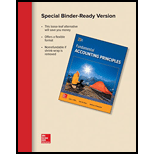
Introduction:
Ratio Analysis
• Ratio analysis is a study of several key metrics of a company based on the data presented in its’ financial statements with an objective to evaluate the financial health of a company.
• It is essential for investors, stakeholders, government bodies etc. to evaluate the key metrics of an entity in order to ensure that the company fulfills the going concern principle and displays financial stability.
The key metrics mentioned above include the following:
• Profit Margin – A measure of the Profit and turnover. It is an indicator of the profit earned by the business in percentage terms from each unit of goods sold.
• Debt Equity Ratio – A Measure of the total debt used to leverage the business in relation to the percentage of equity.
• Gross Margin Ratio – A measure of the gross margin earned from the turnover for the reporting period.
• Acid Test Ratio – Also known as quick ratio, it seeks to measure the liquidity position of the business.
• Accounts receivable turnover – A measure of the relation between the turnover and accounts receivable measured in number of times.
• Basic Earnings per share – It is a measure of the net earnings of the equity shareholder on a per share basis.
• Inventory Turnover Ratio – A measure of the correlation between the inventory of the company and the total turnover evaluating the rollover of inventory in relation to turnover.
• Dividend Yield Ratio – It is a measure of the total dividend earned by the equity shareholder in relation to the shares held.
To Determine:
Whether the change in ratios are favorable or unfavorable.
Want to see the full answer?
Check out a sample textbook solution
Chapter 17 Solutions
Loose Leaf for Fundamental Accounting Principles
- I need assistance with this financial accounting question using appropriate principles.arrow_forwardSolve with explanation and accounting questionarrow_forwardWhen preparing the trial balance, the accountant of Zenith Co. noticed that the debit column exceeded the credit column by $1,000. Which of the following errors could cause such an imbalance? A) A transaction not recorded at all B) Reversing the debit and credit C) Posting an amount twice to the debit side D) Recording a sale as a purchase MCQarrow_forward
- What are the required sales?arrow_forwardLuma Corp. had net credit sales of $2,400,000 in 2023. The beginning accounts receivable balance was $180,000, and the ending balance was $210,000. (a) What is the receivables turnover? (b) What is the average collection period in days?arrow_forwardWhat is the desired profit for the year?arrow_forward

 AccountingAccountingISBN:9781337272094Author:WARREN, Carl S., Reeve, James M., Duchac, Jonathan E.Publisher:Cengage Learning,
AccountingAccountingISBN:9781337272094Author:WARREN, Carl S., Reeve, James M., Duchac, Jonathan E.Publisher:Cengage Learning, Accounting Information SystemsAccountingISBN:9781337619202Author:Hall, James A.Publisher:Cengage Learning,
Accounting Information SystemsAccountingISBN:9781337619202Author:Hall, James A.Publisher:Cengage Learning, Horngren's Cost Accounting: A Managerial Emphasis...AccountingISBN:9780134475585Author:Srikant M. Datar, Madhav V. RajanPublisher:PEARSON
Horngren's Cost Accounting: A Managerial Emphasis...AccountingISBN:9780134475585Author:Srikant M. Datar, Madhav V. RajanPublisher:PEARSON Intermediate AccountingAccountingISBN:9781259722660Author:J. David Spiceland, Mark W. Nelson, Wayne M ThomasPublisher:McGraw-Hill Education
Intermediate AccountingAccountingISBN:9781259722660Author:J. David Spiceland, Mark W. Nelson, Wayne M ThomasPublisher:McGraw-Hill Education Financial and Managerial AccountingAccountingISBN:9781259726705Author:John J Wild, Ken W. Shaw, Barbara Chiappetta Fundamental Accounting PrinciplesPublisher:McGraw-Hill Education
Financial and Managerial AccountingAccountingISBN:9781259726705Author:John J Wild, Ken W. Shaw, Barbara Chiappetta Fundamental Accounting PrinciplesPublisher:McGraw-Hill Education





